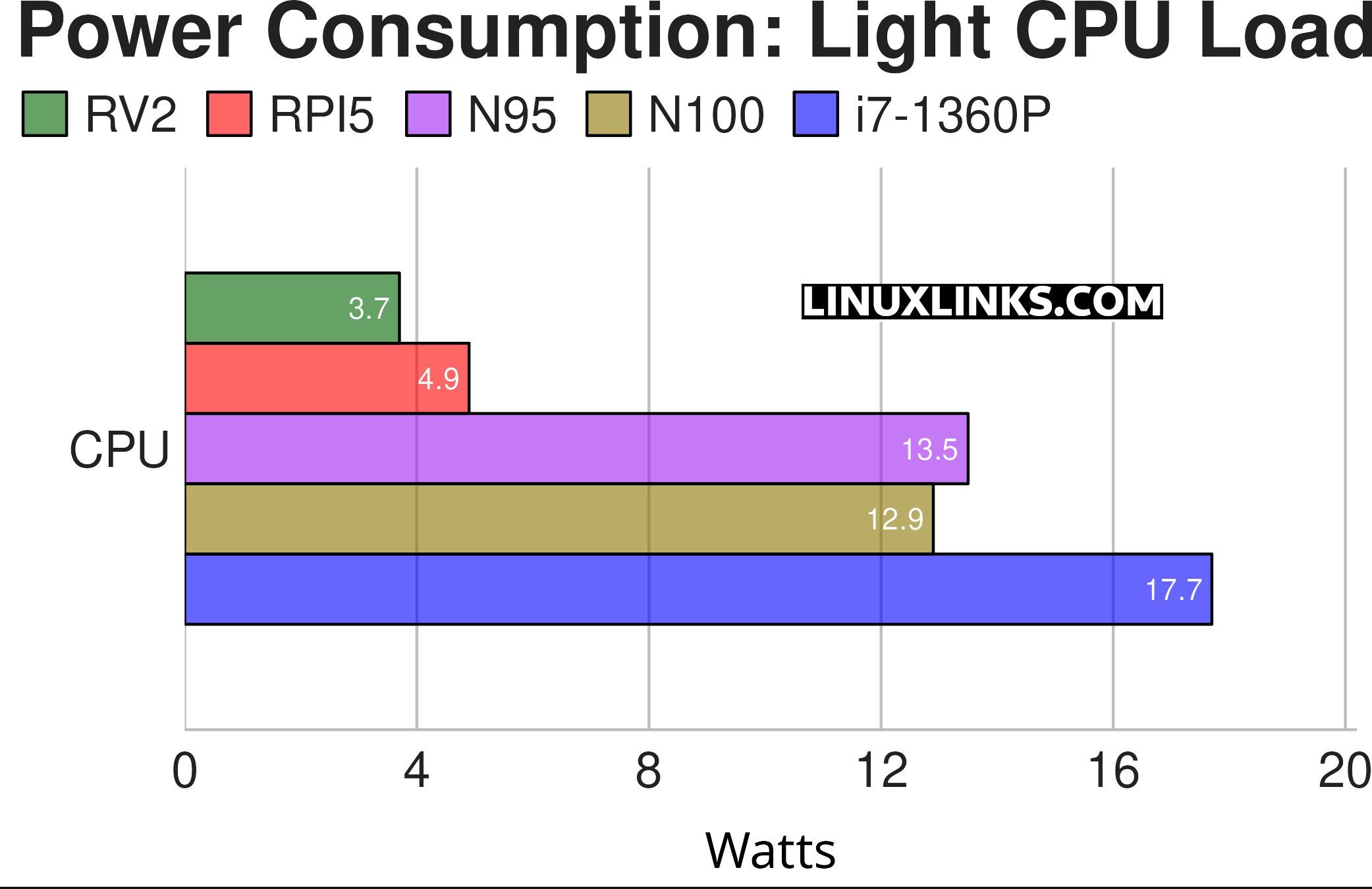Last Updated on August 31, 2025
In this test, I used each machine over many days performing a variety of general desktop tasks including, but not limited, to web surfing, email, compiling source code, watching video, and listening to music.
The chart shows the power consumption of each machine. The figures are the power draw for the machine, not just the CPU.

The Orange Pi RV2 is again incredibly frugal. But bear in mind it’s much slower than the other machines.
Notes about the chart:
- The tasks do not include any activities that are GPU intensive such as gaming, running locally-hosted AI apps, video recording / live streaming etc.
- While the tests access software that uses the GPU (such as Wayland), the GPU power consumption is minimal.
- All the machine use onboard graphics.
- None of the machines have power management functionality built into the BIOS.
- The DreamQuest and Intel Mini PCs are using the Balanced CPU governor. The Orange Pi RV2 and the Raspberry Pi 5 are using their default settings with no overclocking/underclocking.
- WiFi and Bluetooth are enabled on all machines.
- The RV2 is running Ubuntu 24.04.2 (Noble Numbat) The Pi 5 is running the Raspberry Pi OS (which is based on Debian 12). The other machines are running Ubuntu 25.04.
Next page: Page 3 – Power Consumption With CPU Stressed
Pages in this article:
Page 1 – Power Consumption With System Idle
Page 2 – Power Consumption With Light Usage
Page 3 – Power Consumption With CPU Stressed
Page 4 – Electricity Costs / Specifications
All articles in each series:
| Orange Pi RV2 | |
|---|---|
| Introduction | Introduction to the series and interrogation of the RV2 |
| Benchmarks | Benchmarking the Orange PI Single Board Computers |
| Power | I compare the RV2's power consumption to other machines |
| orangepi-config | A utility to configure this single board computer |
| Building a program | I build fooyin on the RV2. fooyin is a great open source music player |
| eMMC | Running the operating system from the eMMC |

I’m fascinated by RISC-V.